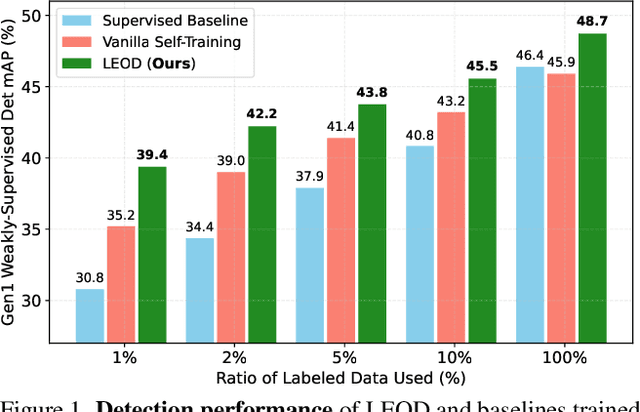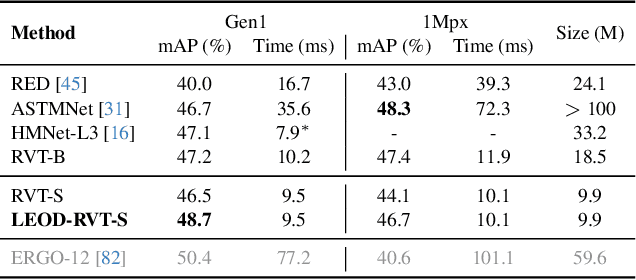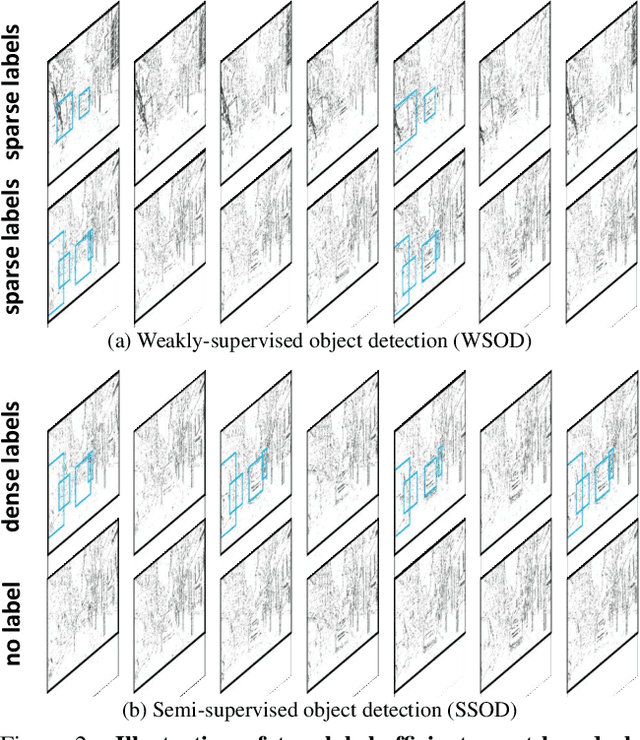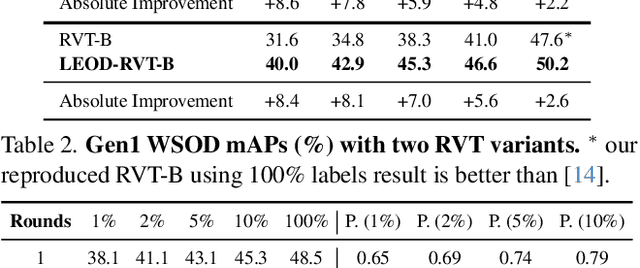Xudong Liu
On Path to Multimodal Historical Reasoning: HistBench and HistAgent
May 26, 2025Abstract:Recent advances in large language models (LLMs) have led to remarkable progress across domains, yet their capabilities in the humanities, particularly history, remain underexplored. Historical reasoning poses unique challenges for AI, involving multimodal source interpretation, temporal inference, and cross-linguistic analysis. While general-purpose agents perform well on many existing benchmarks, they lack the domain-specific expertise required to engage with historical materials and questions. To address this gap, we introduce HistBench, a new benchmark of 414 high-quality questions designed to evaluate AI's capacity for historical reasoning and authored by more than 40 expert contributors. The tasks span a wide range of historical problems-from factual retrieval based on primary sources to interpretive analysis of manuscripts and images, to interdisciplinary challenges involving archaeology, linguistics, or cultural history. Furthermore, the benchmark dataset spans 29 ancient and modern languages and covers a wide range of historical periods and world regions. Finding the poor performance of LLMs and other agents on HistBench, we further present HistAgent, a history-specific agent equipped with carefully designed tools for OCR, translation, archival search, and image understanding in History. On HistBench, HistAgent based on GPT-4o achieves an accuracy of 27.54% pass@1 and 36.47% pass@2, significantly outperforming LLMs with online search and generalist agents, including GPT-4o (18.60%), DeepSeek-R1(14.49%) and Open Deep Research-smolagents(20.29% pass@1 and 25.12% pass@2). These results highlight the limitations of existing LLMs and generalist agents and demonstrate the advantages of HistAgent for historical reasoning.
Caesar: A Low-deviation Compression Approach for Efficient Federated Learning
Dec 28, 2024Abstract:Compression is an efficient way to relieve the tremendous communication overhead of federated learning (FL) systems. However, for the existing works, the information loss under compression will lead to unexpected model/gradient deviation for the FL training, significantly degrading the training performance, especially under the challenges of data heterogeneity and model obsolescence. To strike a delicate trade-off between model accuracy and traffic cost, we propose Caesar, a novel FL framework with a low-deviation compression approach. For the global model download, we design a greedy method to optimize the compression ratio for each device based on the staleness of the local model, ensuring a precise initial model for local training. Regarding the local gradient upload, we utilize the device's local data properties (\ie, sample volume and label distribution) to quantify its local gradient's importance, which then guides the determination of the gradient compression ratio. Besides, with the fine-grained batch size optimization, Caesar can significantly diminish the devices' idle waiting time under the synchronized barrier. We have implemented Caesar on two physical platforms with 40 smartphones and 80 NVIDIA Jetson devices. Extensive results show that Caesar can reduce the traffic costs by about 25.54%$\thicksim$37.88% compared to the compression-based baselines with the same target accuracy, while incurring only a 0.68% degradation in final test accuracy relative to the full-precision communication.
RobotDiffuse: Motion Planning for Redundant Manipulator based on Diffusion Model
Dec 27, 2024



Abstract:Redundant manipulators, with their higher Degrees of Freedom (DOFs), offer enhanced kinematic performance and versatility, making them suitable for applications like manufacturing, surgical robotics, and human-robot collaboration. However, motion planning for these manipulators is challenging due to increased DOFs and complex, dynamic environments. While traditional motion planning algorithms struggle with high-dimensional spaces, deep learning-based methods often face instability and inefficiency in complex tasks. This paper introduces RobotDiffuse, a diffusion model-based approach for motion planning in redundant manipulators. By integrating physical constraints with a point cloud encoder and replacing the U-Net structure with an encoder-only transformer, RobotDiffuse improves the model's ability to capture temporal dependencies and generate smoother, more coherent motion plans. We validate the approach using a complex simulator, and release a new dataset with 35M robot poses and 0.14M obstacle avoidance scenarios. Experimental results demonstrate the effectiveness of RobotDiffuse and the promise of diffusion models for motion planning tasks. The code can be accessed at https://github.com/ACRoboT-buaa/RobotDiffuse.
XRAG: eXamining the Core -- Benchmarking Foundational Components in Advanced Retrieval-Augmented Generation
Dec 24, 2024Abstract:Retrieval-augmented generation (RAG) synergizes the retrieval of pertinent data with the generative capabilities of Large Language Models (LLMs), ensuring that the generated output is not only contextually relevant but also accurate and current. We introduce XRAG, an open-source, modular codebase that facilitates exhaustive evaluation of the performance of foundational components of advanced RAG modules. These components are systematically categorized into four core phases: pre-retrieval, retrieval, post-retrieval, and generation. We systematically analyse them across reconfigured datasets, providing a comprehensive benchmark for their effectiveness. As the complexity of RAG systems continues to escalate, we underscore the critical need to identify potential failure points in RAG systems. We formulate a suite of experimental methodologies and diagnostic testing protocols to dissect the failure points inherent in RAG engineering. Subsequently, we proffer bespoke solutions aimed at bolstering the overall performance of these modules. Our work thoroughly evaluates the performance of advanced core components in RAG systems, providing insights into optimizations for prevalent failure points.
Improving the Consistency in Cross-Lingual Cross-Modal Retrieval with 1-to-K Contrastive Learning
Jun 26, 2024Abstract:Cross-lingual Cross-modal Retrieval (CCR) is an essential task in web search, which aims to break the barriers between modality and language simultaneously and achieves image-text retrieval in the multi-lingual scenario with a single model. In recent years, excellent progress has been made based on cross-lingual cross-modal pre-training; particularly, the methods based on contrastive learning on large-scale data have significantly improved retrieval tasks. However, these methods directly follow the existing pre-training methods in the cross-lingual or cross-modal domain, leading to two problems of inconsistency in CCR: The methods with cross-lingual style suffer from the intra-modal error propagation, resulting in inconsistent recall performance across languages in the whole dataset. The methods with cross-modal style suffer from the inter-modal optimization direction bias, resulting in inconsistent rank across languages within each instance, which cannot be reflected by Recall@K. To solve these problems, we propose a simple but effective 1-to-K contrastive learning method, which treats each language equally and eliminates error propagation and optimization bias. In addition, we propose a new evaluation metric, Mean Rank Variance (MRV), to reflect the rank inconsistency across languages within each instance. Extensive experiments on four CCR datasets show that our method improves both recall rates and MRV with smaller-scale pre-trained data, achieving the new state-of-art.
Seed-TTS: A Family of High-Quality Versatile Speech Generation Models
Jun 04, 2024



Abstract:We introduce Seed-TTS, a family of large-scale autoregressive text-to-speech (TTS) models capable of generating speech that is virtually indistinguishable from human speech. Seed-TTS serves as a foundation model for speech generation and excels in speech in-context learning, achieving performance in speaker similarity and naturalness that matches ground truth human speech in both objective and subjective evaluations. With fine-tuning, we achieve even higher subjective scores across these metrics. Seed-TTS offers superior controllability over various speech attributes such as emotion and is capable of generating highly expressive and diverse speech for speakers in the wild. Furthermore, we propose a self-distillation method for speech factorization, as well as a reinforcement learning approach to enhance model robustness, speaker similarity, and controllability. We additionally present a non-autoregressive (NAR) variant of the Seed-TTS model, named $\text{Seed-TTS}_\text{DiT}$, which utilizes a fully diffusion-based architecture. Unlike previous NAR-based TTS systems, $\text{Seed-TTS}_\text{DiT}$ does not depend on pre-estimated phoneme durations and performs speech generation through end-to-end processing. We demonstrate that this variant achieves comparable performance to the language model-based variant and showcase its effectiveness in speech editing. We encourage readers to listen to demos at \url{https://bytedancespeech.github.io/seedtts_tech_report}.
SCE-MAE: Selective Correspondence Enhancement with Masked Autoencoder for Self-Supervised Landmark Estimation
May 28, 2024Abstract:Self-supervised landmark estimation is a challenging task that demands the formation of locally distinct feature representations to identify sparse facial landmarks in the absence of annotated data. To tackle this task, existing state-of-the-art (SOTA) methods (1) extract coarse features from backbones that are trained with instance-level self-supervised learning (SSL) paradigms, which neglect the dense prediction nature of the task, (2) aggregate them into memory-intensive hypercolumn formations, and (3) supervise lightweight projector networks to naively establish full local correspondences among all pairs of spatial features. In this paper, we introduce SCE-MAE, a framework that (1) leverages the MAE, a region-level SSL method that naturally better suits the landmark prediction task, (2) operates on the vanilla feature map instead of on expensive hypercolumns, and (3) employs a Correspondence Approximation and Refinement Block (CARB) that utilizes a simple density peak clustering algorithm and our proposed Locality-Constrained Repellence Loss to directly hone only select local correspondences. We demonstrate through extensive experiments that SCE-MAE is highly effective and robust, outperforming existing SOTA methods by large margins of approximately 20%-44% on the landmark matching and approximately 9%-15% on the landmark detection tasks.
LEOD: Label-Efficient Object Detection for Event Cameras
Nov 29, 2023



Abstract:Object detection with event cameras enjoys the property of low latency and high dynamic range, making it suitable for safety-critical scenarios such as self-driving. However, labeling event streams with high temporal resolutions for supervised training is costly. We address this issue with LEOD, the first framework for label-efficient event-based detection. Our method unifies weakly- and semi-supervised object detection with a self-training mechanism. We first utilize a detector pre-trained on limited labels to produce pseudo ground truth on unlabeled events, and then re-train the detector with both real and generated labels. Leveraging the temporal consistency of events, we run bi-directional inference and apply tracking-based post-processing to enhance the quality of pseudo labels. To stabilize training, we further design a soft anchor assignment strategy to mitigate the noise in labels. We introduce new experimental protocols to evaluate the task of label-efficient event-based detection on Gen1 and 1Mpx datasets. LEOD consistently outperforms supervised baselines across various labeling ratios. For example, on Gen1, it improves mAP by 8.6% and 7.8% for RVT-S trained with 1% and 2% labels. On 1Mpx, RVT-S with 10% labels even surpasses its fully-supervised counterpart using 100% labels. LEOD maintains its effectiveness even when all labeled data are available, reaching new state-of-the-art results. Finally, we show that our method readily scales to improve larger detectors as well.
Code-Style In-Context Learning for Knowledge-Based Question Answering
Sep 09, 2023Abstract:Current methods for Knowledge-Based Question Answering (KBQA) usually rely on complex training techniques and model frameworks, leading to many limitations in practical applications. Recently, the emergence of In-Context Learning (ICL) capabilities in Large Language Models (LLMs) provides a simple and training-free semantic parsing paradigm for KBQA: Given a small number of questions and their labeled logical forms as demo examples, LLMs can understand the task intent and generate the logic form for a new question. However, current powerful LLMs have little exposure to logic forms during pre-training, resulting in a high format error rate. To solve this problem, we propose a code-style in-context learning method for KBQA, which converts the generation process of unfamiliar logical form into the more familiar code generation process for LLMs. Experimental results on three mainstream datasets show that our method dramatically mitigated the formatting error problem in generating logic forms while realizing a new SOTA on WebQSP, GrailQA, and GraphQ under the few-shot setting.
Cross-view Semantic Alignment for Livestreaming Product Recognition
Aug 19, 2023



Abstract:Live commerce is the act of selling products online through live streaming. The customer's diverse demands for online products introduce more challenges to Livestreaming Product Recognition. Previous works have primarily focused on fashion clothing data or utilize single-modal input, which does not reflect the real-world scenario where multimodal data from various categories are present. In this paper, we present LPR4M, a large-scale multimodal dataset that covers 34 categories, comprises 3 modalities (image, video, and text), and is 50x larger than the largest publicly available dataset. LPR4M contains diverse videos and noise modality pairs while exhibiting a long-tailed distribution, resembling real-world problems. Moreover, a cRoss-vIew semantiC alignmEnt (RICE) model is proposed to learn discriminative instance features from the image and video views of the products. This is achieved through instance-level contrastive learning and cross-view patch-level feature propagation. A novel Patch Feature Reconstruction loss is proposed to penalize the semantic misalignment between cross-view patches. Extensive experiments demonstrate the effectiveness of RICE and provide insights into the importance of dataset diversity and expressivity. The dataset and code are available at https://github.com/adxcreative/RICE
 Add to Chrome
Add to Chrome Add to Firefox
Add to Firefox Add to Edge
Add to Edge